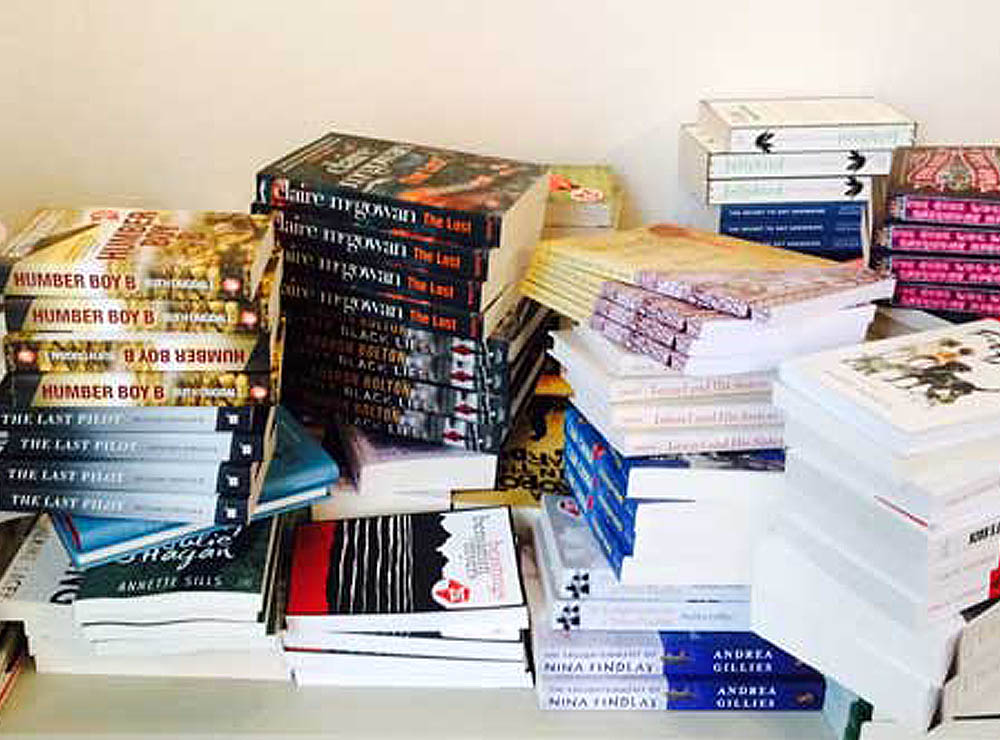
Rowan Whiteside, Brave New Reads Communications Coordinator blogs on how the Brave New Reads books are chosen:

How can you possibly choose just six books to be part of Brave New Reads? How do you decide which books are the bravest and brightest around, which titles are going to introduce readers to thrilling new worlds? Well, we do it with spreadsheets, colours, top fives, hundreds of reviews, and with the gracious assistance of the Readers’ Circle, a community of eager readers from across East Anglia.
The Readers’ Circle are all volunteers. They live in villages and cities and small towns across Norfolk, Suffolk and Cambridgeshire. They come from different backgrounds, and have different reading habits: some snatch the time to read on lunch breaks or bus journeys, some are able to indulge their love for the written word all day everyday, and some squeeze their reading in when the kids are asleep. No matter when, where and how they read, every member of the Readers’ Circle have one thing in common; they share a love for reading and a desire to recommend great books. (Find out more about the Readers’ Circle.)
This year we started our selection process armed with a list of titles (sourced from individual recommendations, prize longlists, review pages, and recommended by publishers) including poetry, non-fiction, short stories, works in translation, and YA. Melanie, the Brave New Reads Programme Coordinator, got in touch with the publishers of the recommended titles and asked very nicely if WCN could have copies of the suggested books. As the parcels started arriving everyone in the office gathered round, eager to get to the books inside.
The longlisted books, all 121 of them, were distributed to our Readers’ Circle and they started to read, and read, and read.
And this is where the choosing began. Each book that is read must be reviewed and marked red, amber or green. Colouring the review red meant that the reader disliked the book and wouldn’t recommend it, amber that the reader was unsure, and green meant that the reader loved the book. It’s only been two months and we’ve already had more than 500 reviews, with Melanie valiantly organising the feedback onto multiple spreadsheets.
In theory, it should then be a simple task to cut down the longlist according to the number of green, amber and red reviews. In reality, some books create violent reactions (marmite books, as I like to call them) with some people loathing them and others adoring them, skewing the numbers. Naturally some books are also reviewed less than others. Therefore, each colour is assigned a value so an average rating can be calculated. BUT, this still isn’t enough to have a truly representative view of the titles, so Melanie asks for all of our Readers’ Circle members to send a Top 5 of their favourite reads so far.
The Readers’ Circle meet regularly to discuss their opinions on the books, and last week we met in WCN’s new home of Dragon Hall to discuss cutting down the long list to a medium list of around 60-80 titles. Using all the reviews, the Top 5’s and the colour ratings, the Readers’ Circle members debated which books should make it through and took the opportunity to champion their favourite books.
The next day, having well and truly crossed some titles off the list, and clutching handfuls of notes and comments, we began to cut down the list in a painstaking fashion. As a result, we ended up with 74 titles on the medium list, all of which have so far excited, challenged and entertained.
One of the sad realities of having to cut down the Brave New Reads list is that some much-loved books don’t make it through to the next stage of shortlisting. As such, we’ve decided to feature three of the very-almost-made-it titles at the bottom of this blog, along with a review which might tempt you to check out the book (perhaps from your local library!).
As always, happy reading!
Making Nice by Matt Sumell
 Find out more about Brave New Reads.
Find out more about Brave New Reads.
You may also like...
Read three of the best poetry collections based in the East of England
Our weekly spotlight on an East Anglian Book Awards 2023 shortlist

19th December 2023
NCW staff’s top ten favourite reads for winter
We’ve shared our recommended books for the winter season, with everything from haunted gothic novels to heartwarming Japanese fiction.

14th December 2023
Read three exciting historical books from East Anglia

8th December 2023






